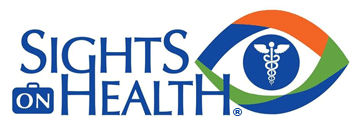Here is a copy of the article in this week’s Times of Smithtown.
Local doctors, students bring medical care to Peru
While a car accident about 10 years ago left ophthalmologist Debra Messina Coritsidis unable to go back to work due to chronic back spasms, she recently found another way to help others receive medical care. Coritsidis, who had a practice in Setauket before the accident, coordinated the cataract surgical mission, part of A Promise to Peru, Stony Brook University School of Medicine’s medical mission to the Sacred Valley of Peru.
“I was at such a loss because I loved doing what I was doing,” Coritsidis said. “I thought this would be a great opportunity for me to still provide care through others on an optometric level.”
This year 19 medical students from Stony Brook, accompanied by physicians, medical professionals and their family members, will work out of Arco Iris Clinic in Urubamba, Sacred Valley, Peru from June 25 to July 20.
This is the first year the mission will provide cataract surgery, thanks to doctors Michael Sable, Farshad Lalehzarian, Amanda Lehman, George Coritsidis, and certified surgical technician, Lorena Chinchilla.
The cataract surgical mission is a five-day mission within A Promise to Peru, with enough resources to allow doctors to perform 50 surgeries. Coritsidis a Fort Salonga resident, worked tirelessly for months, partnering with Peruvian physicians, and getting approval from the Peruvian Minister of Health to bring medical equipment into the country.
 |
|
“It’s such a thrill when you take someone who can barely see, and the day after surgery they come back and they are reading the eye charts,” she said.
The idea for A Promise to Peru originated three years ago when a SBU medical school student, accompanied by Dr. John Shanley, associate dean for international programs at SBU’s medical school, participated in a medical mission to Peru organized by Case Western Reserve University School of Medicine in Ohio.
This year each school will visit Peru for four weeks, with Case Western students’ last week overlapping Stony Brook students’ first week. During the overlapping week American physicians will present lectures to Peruvian physicians and nurses.
Shanley has seen the mission grow and witnessed the affect it has had on students.
“It has been a life transforming experience for the medical students,” he said.
Coritsidis said last year the month-long clinic saw 100 to 150 patients a day, five days a week, and expects this year’s numbers to be the same if not more, as the number of Peruvians that anticipate this medical care grows.
Shanley said a large majority of the Peruvians they see complain about back problems and poor vision.
“We do a lot of pain management and try to teach them how to lift properly, so that they don’t hurt themselves,” Shanley said. He said last year the mission’s volunteers handed out more than 1,000 pairs of eyeglasses.
Ruksana Rangwala, a medical student who just completed her first year at Stony Brook, said she instantly became interested in the mission after hearing about it from students who went last year.
“What drew me to this mission was the opportunity for students to shadow physicians, who get past cultural barriers to provide care,” she said.
Rangwala said the students pay about 85 percent of the expenses for the trip out of pocket. The 23-year-old, whose goal has always been to serve underprivileged countries, said she believes this trip will be well worth it.
“I know this will drive my passion for medicine further,” she said.
